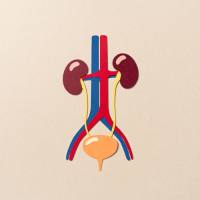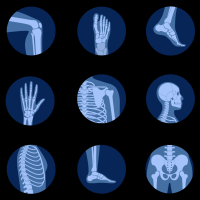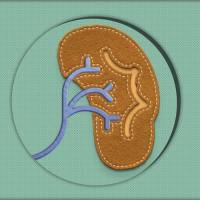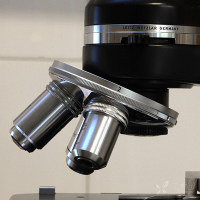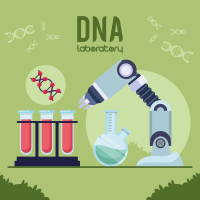《Cancer Research》:肿瘤中的正常细胞促进肿瘤生长
遗传学家一直认为基质细胞在肿瘤中始终处于被动地位。但是,新的研究表明在基质肿瘤细胞中也发生了遗传性损伤,而且这些损伤可能对肿瘤的发展有重要影响。基质细胞能够制造出生长因子和其它能够影响癌细胞行为的物质。染色体区域的丢失可能导致调控这些物质的基因的丢失;它们也有可能产生限制临近细胞生长的因子,不过这些都还只是假设。
新研究中,Eng和同事分析了134个侵略性乳腺癌的组织样品。他们检测了基质细胞——纤维原细胞(这种肿瘤基质的主要成分)。研究人员将381种分子标记散播到人类基因组中。这些标记能够作为指示46个人类染色体的不同区域的路标。在纤维原细胞中,研究人员发现在19条不同的染色体中共有38个标记(代表38个区域)丢失了。研究人员寻找癌细胞中的标记时发现,源自15个不同染色体上的19个DNA区域丢失了。这意味着肿瘤基质细胞丢失的DNA区域比癌细胞还多,而且这种丢失并不是随机散播在染色体上而是集中在染色体上一些特殊的区域。目前,研究人员正在寻找病人肿瘤的基质遗传损伤和肿瘤对治疗的反应之间的关系。
这项研究表明基质在促进肿瘤入侵临近阻止和扩散中起到一定的作用,而且这项研究将促进靶向基质细胞和预防癌症扩散的药物的发展。
Cancer Research 64, 7231-7236, October 15, 2004
Advances in Brief
Combined Total Genome Loss of Heterozygosity Scan of Breast Cancer Stroma and Epithelium Reveals Multiplicity of Stromal Targets
Koichi Fukino1,2,3, Lei Shen6, Satoshi Matsumoto2,3, Carl D. Morrison1,3,5, George L. Mutter7 and Charis Eng1,2,3,4,8
1 Clinical Cancer Genetics Program, 2 Human Cancer Genetics Program, Comprehensive Cancer Center, 3 Division of Human Cancer Genetics, Department of Molecular Virology, Immunology, and Medical Genetics, 4 Division of Human Genetics, Department of Internal Medicine, 5 Department of Pathology, College of Medicine, and 6 Division of Epidemiology and Biometrics, School of Public Health, The Ohio State University, Columbus, Ohio; 7 Department of Pathology, Brigham and Women’s Hospital, Harvard Medical School, Boston, Massachusetts; and 8 Cancer Research UK Human Cancer Genetics Research Group, University of Cambridge, Cambridge, United Kingdom
ABSTRACT
TOP
ABSTRACT
Introduction
Materials and Methods
Results
Discussion
REFERENCES
Recent breast cancer studies have highlighted the importance of interactions between cancer epithelium and tumor stroma. Recently, the focus of solid tumor investigations has shifted from mutations in carcinomatous epithelium to disturbances of tissue organization in cancer. The genetic basis of this microenvironment, however, remains to be clarified. To begin to resolve this problem, a total genome loss of heterozygosity (LOH) scan was done on epithelial and stromal DNA from 134 sporadic invasive breast carcinomas. In addition to detecting more frequent LOH at three loci in stroma than in epithelium, we found strong evidence that LOH frequencies were significantly elevated in specific regions of each chromosome. We detected 57 markers, which were preferentially lost either in stroma (n = 38) or epithelium (n = 19), relative to the background LOH frequencies on their respective chromosomes. This multiplicity of stromal cell LOH, and hence loss of genetic material, provides a possible mechanism for interpatient variation in host-stromal response to invading adenocarcinoma cells. This is consistent with a model in which initial, random LOH occurs equally among epithelium and stroma, but subsequent clonal selection is driven by factors, which appear to be distinctly different between malignant epithelial and surrounding stromal cells. Genetic alterations in stroma did not mimic those in epithelium, but they could play a different and parallel role in carcinogenesis and tumor progression, probably by modifying some features specific to breast cancer.
Introduction
TOP
ABSTRACT
Introduction
Materials and Methods
Results
Discussion
REFERENCES
Breast cancer is the most common women’s cancer in the Western hemisphere, occurring in one in eight females. Although germ-line mutations in BRCA1, BRCA2, TP53, and PTEN tumor suppressor genes are associated with various inherited breast cancer syndromes, they are rarely mutated in sporadic breast cancers (1) . Hemizygous deletion of tumor suppressor genes is an alternative mechanism of tumor suppressor inactivation more commonly invoked in a sporadic disease setting (2) . Now it is recognized that dynamic epithelial-stromal interactions in solid tumors may select subsets of stromal cells with the ability to modulate tumor behavior, and the local microenvironment promotes emergence of tumor-associated stromal cells with different functions from normal stroma (3, 4, 5) . These functional changes of stroma may partly be derived from the changes in secretion of growth factors and in the extracellular matrix (6 , 7) . Genetic changes in tumor stroma are another mechanism that may create functional divergence of tumor stroma from normal stroma and of interpatient diversity of host response. This possibility has been experimentally validated by several independent studies showing the presence of loss of heterozygosity (LOH) and somatic mutations of tumor suppressor genes such as PTEN and TP53 in tumor stroma (8, 9, 10, 11, 12) . Because these genetic alterations can be distinct from and, hence, independent of those in adjacent malignant epithelium, the epithelial and stromal elements are clearly not derived from a common progenitor clone but rather undergo similar selective pressures in the tumor microenvironment (9 , 13) . With laser capture microdissection and multiplex-PCR genome-wide LOH mapping, it is now possible to systematically examine the differences in the extent and pattern of LOH between stroma and epithelium. We therefore used a 381-microsatellite marker whole genome LOH scan to analyze global genomic alterations between carcinomatous epithelium and tumor stroma from 134 sporadic invasive breast carcinoma samples.
Materials and Methods
TOP
ABSTRACT
Introduction
Materials and Methods
Results
Discussion
REFERENCES
Breast Carcinoma Samples and Laser Capture Microdissection.
A total of 134 samples of clinically sporadic invasive breast cancers was obtained from the Departments of Pathology from The Ohio State University and the Brigham and Women’s Hospital, under approval from their respective Institutional Review Boards. To obtain tumor epithelium and tumor stroma, laser capture microdissection was done with the Arcturus PixCell II microscope (Arcturus Engineering, Inc., Mountain View, CA; ref. 9 ). Corresponding normal tissues were procured from separate blocks diagnosed as containing no carcinomatous tissue (first choice) and, if not possible, from nonneoplastic tissues at a distance from the cancer, which were separated from the carcinomatous tissues by normal fat-tissue layers.
Total Genome LOH Scan.
Genomic DNA was extracted as previously described (9 , 13) , with the exception that incubation in proteinase K was done at 65°C for 2 days. The primer sets for multiplex PCR defined 386 microsatellite markers in 72 multiplex panels (Research Genetics, Invitrogen, Carlsbad, CA). Genotyping was done with the ABI 377xl or 3700 semiautomated sequencer (Applied Biosystems, Perkin-Elmer Corp., Norwalk, CT). The results were analyzed by automated fluorescence detection using the GeneScan collection and analysis software (GeneScan; ABI, Norwalk, CT). Scoring of LOH was done by inspection of the GeneScan output. A ratio of peak heights of alleles between germ-line and somatic DNA 1.9:1 was used to define LOH in this study (9) . This process was validated in several ways (see supplement for details).
Statistical Analyses.
Five markers were excluded from additional statistical analyses because each of these markers was noninformative in all epithelial samples or all stromal samples. For LOH frequencies, we used sample average LOH frequencies and model-based analysis. To account for a number of features such as the intra-sample correlations and varying numbers and sets of samples for which each marker is informative, we used marginal models. The inference resulting from marginal models is robust compared with sample average LOH frequencies. Associations among LOH events were explored using clustering methods. All data analysis was done with the statistical package R, version 1.8.1. (The R Foundation for Statistical Computing, Techinische Universitat Wien, Wien, Austria).9 See supplement for details for statistical analyses.
Results
TOP
ABSTRACT
Introduction
Materials and Methods
Results
Discussion
REFERENCES
Comparison of Sample-Wise Average LOH Frequencies and Overall LOH Frequencies for Each Chromosome between Epithelium and Stroma.
Using 381 markers across all chromosomes, ranging from 7 (chromosome 21) to 31 (chromosome 1) markers/chromosome, 43,839 (22,409 for epithelium and 21,430 for stroma) PCR reactions were informative for evaluation of LOH. In total, 14,310 (32.6%) [8,231 (36.7%) in the epithelium and 6,079 (28.4%) in the stroma] LOH events occurred. The average LOH frequency per marker ranged from 3.8 to 77.6% (a median of 42.0) in epithelium and from 1.5 to 70.0% (a median 34.1) in stroma (Fig. 1A) . The average LOH frequencies over entire chromosomes ranged from 30.2 to 43.6% in the epithelium and from 22.9 to 33.4% in the stroma. Moreover, we obtained the estimated LOH probabilities based on a marginal model. Both the sample average LOH frequencies and the model-based LOH probabilities indicated higher values in epithelium than in stroma for all chromosomes at the individual marker level (Fig. 1B) , although the differences are not statistically significant at the 0.05 level for chromosomes 2, 3, 6, 7, 10, 14, 19, and 20, i.e., for these latter chromosomes, LOH frequencies were similar in the epithelium and in the stroma at the individual marker level.
View larger version (43K):
[in this window]
[in a new window]
Fig. 1. Sample-wise, chromosome-wise, and marker-wise LOH frequencies. A, histograms of sample-wise average LOH frequencies in the epithelium (top panel) and stroma (bottom panel). The average sample-wise LOH frequencies were 0.42 in epithelium versus 0.34 in stroma. B, overall LOH frequencies for each chromosome in the epithelium (red bars) and stroma (hatched bars). The top panel shows the LOH frequencies from simple averaging of the data, and the bottom panel shows the model-based estimates (see text and supplement) for the probabilities of LOH. The LOH frequency is always higher in the epithelium, with the smallest difference observed across chromosome 7. C, the empirical cumulative distribution functions of the marker-wise LOH frequencies in the epithelium (red line) and stroma (blue line). The empirical cumulative distribution function for a sample is the proportion of data points less than or equal to any given value. The empirical cumulative distribution function for the LOH frequencies in the stroma is always larger (blue line is above the red line), indicating that for the majority of the markers, LOH is more frequent in the epithelium than in the stroma. D, scatterplot of marker-wise LOH frequencies in the epithelium (x axis) and in the stroma (y axis). The top panel shows the LOH frequencies from simple averaging, and the bottom panel shows the model-based LOH probability estimates. The majority of the points lie below the reference line y = x, indicating higher probability of LOH in the epithelium than in the stroma. Of the 90 markers with significantly different LOH probabilities in the epithelium and stroma (indicated by larger plotting symbols), 3 (ATA79C10, D6S942, and D8S1136) were plotted above the reference line y = x, with higher LOH probabilities in the stroma than in the epithelium.
Comparison of the Marker-Wise LOH Frequencies between Epithelium and Stroma.
For the majority of markers, the average LOH frequencies at each maker were higher in epithelium than in stroma (Fig. 1C) . In contrast, the formal marker-level comparisons between LOH probabilities in the epithelium and stroma, by fitting a marginal model for each chromosome, detected three markers representing significantly higher LOH probabilities in stroma (Table 1A) , compared with 87 markers in epithelium at the p 0.05 level (Fig. 1D) .
View this table:
[in this window]
[in a new window]
Table 1 Information on the markers that show statistical significance
Global Comparison of LOH Frequencies along Chromosomes between Epithelium and Stroma.
Here, we first performed a simple per marker comparison of LOH frequencies between epithelium and stroma postulating that these data may reflect the cell type-specific differences in rate of cell division, apoptosis, or response to carcinogenic factors. The simple comparison of LOH frequencies between epithelium and stroma may also reflect the chromosome-specific differences such as those of chromosomal size. If the latter were true, then the null hypothesis that the LOH probability would remain constant over each entire chromosome would hold true. However, our global tests on all chromosomes in both epithelium and stroma rejected this null hypothesis, suggesting that LOH across chromosomes was not random in both compartments. To detect LOH hot spots, representing a significantly higher LOH frequency than the rest of the markers on the same chromosome in either epithelium or stroma, we fitted the marginal models that used chromosome-wide LOH averages as a baseline for comparison of single average LOH frequencies. Overall, we obtained 38 markers from 19 chromosomes in stroma and 19 different markers from 15 chromosomes in epithelium, respectively, which may be preferentially lost compared with the other markers on the same chromosomes (Table 1B) .
Interactions of LOH Events at Various Loci in Epithelial and Stromal Compartments.
To investigate interactions between LOH events, we focused on our 57 LOH hot spot markers (Table 1B) as a first working model. Patterns of association between specific deleted loci are illustrated in a dendrogram resulting from hierarchical agglomerative clustering of the dissimilarity matrix (Fig. 2A) and as the distances in intuitive two-dimensional plot (Fig. 2B) . It would be important to note that LOH at any particular marker in epithelium and in stroma did not necessarily cluster together.
View larger version (42K):
[in this window]
[in a new window]
Fig. 2. Interactions of LOH events at various loci in epithelial and stromal compartments and a genetic model of breast cancer. A, hierarchical clustering of markers that show elevated LOH frequencies in either epithelium or stroma. To investigate the relationships of LOH events at various loci, markers with higher LOH frequencies (Table 1 B) were contained. A dissimilary matrix between markers was constructed based on the percentage of discordant LOH observations for each pair of markers for samples in which both markers are informative. B, multidimensional scaling with principal coordinate analysis. The distance between a pair of markers is approximately the dissimilarity between the two as measured by the percentage of discordant LOH observations. Markers are arranged in descending order in terms of model-based LOH frequencies. Markers showing elevated LOH frequencies in the epithelium and stroma are marked by red and blue colors, respectively. C, a model of carcinogenesis and acquisition of interpatient heterogeneity in breast cancer. Breast carcinogenesis may be derived from the epithelial genetic alterations at a relatively small number of chromosomal loci that may contain key tumor suppressor genes. They would cause transformation. After transformation, genetic alterations at a variety of chromosomal loci in stroma may modify and/or add the features of breast cancer. The great variations available in the LOH-event repertoire in stroma may contribute more to the interpatient heterogeneity in breast cancer, compared with epithelial LOH events. "A" and "B" in the figure mean genetic alterations in epithelium, and "a" to "e" mean those in stroma.
Discussion
TOP
ABSTRACT
Introduction
Materials and Methods
Results
Discussion
REFERENCES
Although many studies focused on genetic alterations in carcinomatous epithelium, genetic changes in a relatively limited number of tumor-associated genes cannot explain many human in vivo observations such as interpatient variations in tumor behavior and treatment response despite seemingly identical epithelial alterations. It is now slowly being recognized that interactions between carcinomatous epithelium and surrounding tumor stroma can account for such interpatient diversity (14) . Very recent in vitro work showed that the tumor stroma is a target of carcinogens and modulates the growth and oncogenic potential of adjacent epithelium (15 , 16) . Moreover, it was revealed that the corrections of defective signaling in the tumor microenvironment can revert the tumor cells to a normal phenotype (17) .
In our attempt to explore the genetic basis of the tumor microenvironment, global genome LOH analysis in the epithelium and stroma of 134 sporadic invasive breast carcinoma analyzed by several different informatic approaches, including a novel model-based algorithm, reveal several interesting human cancer genetic-based insights. First, our LOH data provided strong evidence that LOH, either in stroma or epithelium, was not uniform (i.e., not completely random) along any of the chromosomes. In other words, we are confident that along each chromosome, some regions were preferentially lost compared with the other regions on the same chromosomes. By using chromosome-wide LOH averages as a baseline for comparison of observed single locus LOH frequencies in stroma and epithelium separately, we detected LOH hot spots specific to each of stroma and epithelium. Thus, we obtained 38 markers as LOH hotspots in the stroma, compared with 19 LOH hot spot markers in the epithelium (Table 1B) . A recent study on the molecular basis of the tumor microenvironment in breast cancer detected no genetic alteration in tumor "stroma" with the different technologies from ours, i.e., array comparative genomic hybridization (aCGH) and single nucleotide polymorphism array (18) . The discrepancy between the results of the previous study (18) and ours may be derived from technology-specific differences. We specifically captured stromal fibroblasts adjacent to malignant epithelium (i.e., the tumor stroma) under direct microscopic observations, whereas the aCGH/single nucleotide polymorphism study analyzed all of the stromal cells in a CD10-enriched fraction following the removal of other cells by using cell-type specific cell surface markers (18) . In the latter (18) , normal stromal cells intervening among tumor stroma may be included into the stromal samples and/or the very cells that carry the genetic alterations may have been selected out, thus accounting for the false negative results. The differences in the resolutions or the threshold values between the previous aCGH/single nucleotide polymorphism study and ours may also explain the discrepancy between the results. Taken together, this previous study (18) and our current one therefore suggest that stromal LOH must involve region lengths under the resolution of aCGH and that the genetic alterations may only be limited to the true tumor stroma. These are plausible explanations because in addition to the present LOH-based study, previous LOH studies by our group and several independent groups not only show the existence of LOH in the stroma of breast cancer but also in tumor stroma from colon, bladder, and ovarian cancers (8, 9, 10, 11, 12 , 19) , thus validating and reconfirming the existence of genetic alterations in stroma. More importantly, we and other independent groups (10 , 12 , 13) have showed the existence of somatic mutations in TP53 and/or PTEN in tumor stroma.
For validation of our LOH hot spots, we compared our results and the raw (not averaged) data from the previous CGH study (20) . In that CGH study (20) , although without distinction between epithelium and stroma, 27 (87.1%) of 31 cases showing segmental DNA loss revealed that at least one of their lost segments contained the markers belonging to the 57 hot spot markers, suggesting that these markers may be preferentially lost compared with the other markers on the same chromosome in breast cancer, even if they may not be distinguished by LOH frequency with the conventional simple average comparisons.
Moreover, our results suggested, surprisingly, that the stromal LOH hot spots were more numerous and widely distributed compared with the epithelial ones. Therefore, LOH in the epithelial cells may be intensely concentrated in a smaller number of loci, whereas in the stromal cells, the pattern was more spatially complex, being distributed over a larger number of loci. This suggests that clonal selection in malignant epithelial cells is strongly biased toward a smaller subset of loci, compared with stromal cells. These observations allow us to propose a model of carcinogenesis by a limited set of genetic alterations, perhaps targeting a limited number of tumor suppressor genes, in the epithelium (Fig. 2C) . These would cause transformation. Then, interpatient diversity by the multiplicity and larger variety of stromal LOH targets would lead to both biological and clinical inter-patient variations (Fig. 2C) .
The individual marker-wise analysis between stroma and epithelium, and the global LOH comparison along chromosomes in either stroma or epithelium address different aspects of carcinogenesis with respect to the two compartments. The basis of greater LOH frequencies in epithelium than in stroma at each marker is not known, but possibilities include cell type-specific differences in de novo deletion rates, rate of cell division, or response to clonal selection factors.
The LOH noted on 11q are worthy of comment. Chromosome arm 11q contained six LOH-hot spot markers (four in stroma and two in epithelium), suggesting the existence of three distinct deleted regions (two in stroma and one in epithelium; Fig. 3 ). The 44-Mb deleted region in epithelium intervened between the proximal 29-Mb– and the distal 11-Mb–deleted regions in stroma. Each of these deleted regions included some known tumor suppressor genes (Fig. 3) . In particular, the matrix metalloproteinase (MMP) gene cluster was included in the epithelial deleted region. As MMPs regulate the microenvironment of breast cancer by degrading extracellular matrix, epithelial LOH in the MMP cluster region could perturb the microenvironment.
View larger version (22K):
[in this window]
[in a new window]
Fig. 3. Three distinct regions of LOH of markers in 11q, two in stroma, and one in the epithelium. Chromosome arm 11q contained six multiplicity-identified markers, four in stroma (in solid-line boxes) and two in epithelium (in dotted-line boxes), respectively. The existence of three distinct target regions of genetic alterations were suggested, with two in stroma () and one in epithelium (), respectively. The cluster of MMP genes was not located in the stromal deleted region but in the epithelial deleted region. MEN1 (susceptibility gene for multiple endocrine neoplasia type 1), RARRES3 (retinoic acid receptor responder 3), BCSC-1 (breast cancer suppressor candidate 1), THY1 (Thy1; a T-cell marker), ATM (ataxia-telangiectasia mutated), PPP2R1B (serine/threonine protein phosphatase 2A b-subunit), SDHD (succinate dehydrogenase subunit D), PGR (progesterone receptor), MMP (matrix metalloproteinase) genes. See text for details.
According to the results of cluster (Fig. 2A and unpublished data) and other analyses, the differences of LOH patterns between matched epithelium and stroma were greater (e.g., different allele lost between epithelium and stroma or LOH in one but not the other) than would be expected from epithelial-mesenchymal transition and exclude the passive transfer of naked DNA between epithelial and stromal cells. Our data, therefore, lend human genetic evidence that the epithelial and stromal cells can originate along two independent paths.
In summary, this study revealed that LOH hot spots in stroma are more numerous and widely distributed than those in the neoplastic epithelium. In other words, stroma is rich in the multiplicity of genetic-alteration targets compared with the epithelium. We suggest that it is the diversity and multiplicity of stromal targets that may contribute to interpatient diversity in biological behavior and clinical outcome in breast cancer. Furthermore, the genetic alterations in stroma did not necessarily mimic those in epithelium but could play a different and parallel role in carcinogenesis and tumor progression. We suspect that global genetic alterations in solid tumor stroma will be an important universal mechanism for tumor invasion and progression as evidenced by independent preliminary data documenting somatic mutations and/or LOH in the stroma of colon cancer (10) , bladder cancer (12) , and ovarian cancer (19) .
FOOTNOTES
Grant support: Jimmy V. Golf Classic Translational Cancer Research Award from the V Foundation (C. Eng), National Cancer Institute Grants P01CA97189-01 (C. Eng) and P30CA16058 (The Ohio State University Comprehensive Cancer Center). C. Eng is the recipient of a Doris Duke Distinguished Clinical Scientist Award.
The costs of publication of this article were defrayed in part by the payment of page charges. This article must therefore be hereby marked advertisement in accordance with 18 U.S.C. Section 1734 solely to indicate this fact.
Note: K. Fukino and L. Shen contributed equally to this work and should be considered joint first authors. Supplementary data for this article can be found at Cancer Research Online ( http://cancerres.aacrjournals.org.ezproxy.fau.edu).
Requests for reprints: Charis Eng, The Ohio State University Human Cancer Genetics Program, 420 West 12th Avenue, Suite 690 TMRF, Columbus, OH 43210. Phone: (614) 292-2347; Fax: (614) 688-3582; E-mail: eng.25@osu.edu.
9 Internet address: http://www.r-project.org/.
Received 8/ 9/04; revised 8/16/04; accepted 8/20/04.
REFERENCES
TOP
ABSTRACT
Introduction
Materials and Methods
Results
Discussion
REFERENCES
Nagy R, Sweet K, Eng C Highly penetrant hereditary cancer syndromes. Oncogene 2004;23:6445-70.[Medline]
Tomlinson IP, Lambros MB, Roylance RR Loss of heterozygosity analysis: practically and conceptually flawed?. Genes Chromosomes Cancer 2002;34:349-53.[Medline]
Bissell MJ, Barcellos-Hoff MH The influence of extracellular matrix on gene expression: is structure the message?. J Cell Sci Suppl 1987;8:327-43.[Medline]
Matrisian LM, Cunha GR, Mohla S Epithelial-stromal interactions and tumor progression: meeting summary and future directions. Cancer Res 2001;61:3844-6.[Abstract/Free Full Text]
Shekhar MP, Werdell J, Santner SJ, Pauley RJ, Tait L Breast stroma plays a dominant regulatory role in breast epithelial growth and differentiation: implications for tumor development and progression. Cancer Res 2001;61:1320-6.[Abstract/Free Full Text]
Schor SL, Schor AM Tumour-stroma interactions: phenotypic and genetic alterations in mammary stroma: implications for tumour progression. Breast Cancer Res 2001;3:373-9.[Medline]
Haslam SZ, Woodward TL Host microenvironment in breast cancer development: epithelial-cell-stromal-cell interactions and steroid hormone action in normal and cancerous mammary gland. Breast Cancer Res 2003;5:208-15.[Medline]
Moinfar F, Man YG, Arnould L, Bratthauer GL, Ratschek M, Tavassoli FA Concurrent and independent genetic alterations in the stromal and epithelial cells of mammary carcinoma: implications for tumorigenesis. Cancer Res 2000;60:2562-6.[Abstract/Free Full Text]
Kurose K, Hoshaw-Woodard S, Adeyinka A, Lemeshow S, Watson PH, Eng C Genetic model of multi-step breast carcinogenesis involving the epithelium and stroma: clues to tumour-microenvironment interactions. Hum Mol Genet 2001;10:1907-13.[Abstract/Free Full Text]
Wernert N, Locherbach C, Wellmann A, Behrens P, Hugel A Presence of genetic alterations in microdissected stroma of human colon and breast cancers. Anticancer Res 2001;21:2259-64.[Medline]
Matsumoto N, Yoshida T, Yama***a K, Numata Y, Okayasu I Possible alternative carcinogenesis pathway featuring microsatellite instability in colorectal cancer stroma. Br J Cancer 2003;89:707-12.[Medline]
Paterson RF, Ulbright TM, MacLennan GT, et al Molecular genetic alterations in the laser-capture-microdissected stroma adjacent to bladder carcinoma. Cancer (Phila.) 2003;98:1830-6.
Kurose K, Gilley K, Matsumoto S, Watson PH, Zhou XP, Eng C Frequent somatic mutations in PTEN and TP53 are mutually exclusive in the stroma of breast carcinomas. Nat Genet 2002;32:355-7.[Medline]
Hede K Environmental protection: Studies highlight importance of tumor microenvironment. J Natl Cancer Inst (Bethesda) 2004;96:1120-1.[Free Full Text]
Maffini MV, Soto AM, Calabro JM, Ucci AA, Sonnenschein C The stroma as a crucial target in rat mammary gland carcinogenesis. J Cell Sci 2004;117:1495-502.[Abstract/Free Full Text]
Bhowmick NA, Chytil A, Plieth D, et al TGF-ß signaling in fibroblasts modulates the oncogenic potential of adjacent epithelia. Science (Wash. DC) 2004;303:848-51.[Abstract/Free Full Text]
Kenny PA, Bissell MJ Tumor reversion: correction of malignant behavior by microenvironmental cues. Int J Cancer 2003;107:688-95.[Medline]
Allinen M, Beroukhim R, Cai L, et al Molecular characterization of the tumor microenvironment in breast cancer. Cancer Cell 2004;6:17-32.[Medline]
Tuhkanen H, Anttila M, Kosma VM, et al Genetic alterations in the peritumoral stromal cells of malignant and borderline epithelial ovarian tumors as indicated by allelic imbalance on chromosome 3p. Int J Cancer 109 2004;2004247-52.
Cingoz S, Altungoz O, Canda T, Saydam S, Aksakoglu G, Sakizli M DNA copy number changes detected by comparative genome hybridization and their association with clinicopathologic parameters in breast tumors. Cancer Genet Cytogenet 2003;145:108-14.[Medline]
http://www.dxy.cn/bbs/post/view?bid=17&id=1801755&sty=1&tpg=1&age=0







